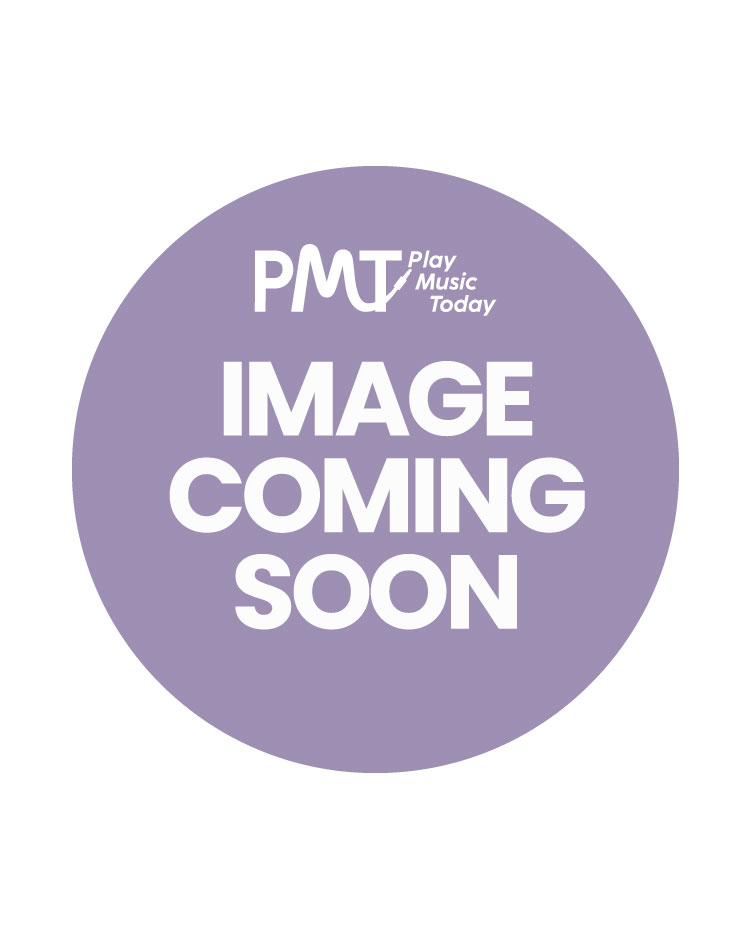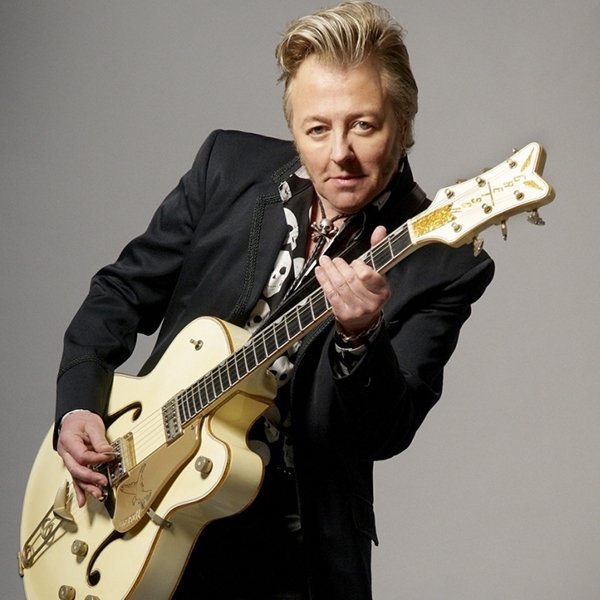Hey hey, my my, Rock'n'Roll will never die, right? And one of the earliest styles of Rock'n'Roll, the Rockabilly, is still in rude health! So check our Brian Setzer gear guide to find out how to nail that vintage sound!
 Each new generation seems to enjoy discovering the delicious sounds of 1950's rock'n'roll and its fashion, too. Well, we can't help you with regards to your quiff, but here at PMT we have lots of gear that'll give you that authentic Rockabilly vibe!
Each new generation seems to enjoy discovering the delicious sounds of 1950's rock'n'roll and its fashion, too. Well, we can't help you with regards to your quiff, but here at PMT we have lots of gear that'll give you that authentic Rockabilly vibe!
ROCKABILLY: IN THE BEGINNING
The story of Rock'n'Roll and Rockabilly are closely linked: it can be said that Rockabilly is the "original" form of Rock'n'Roll, before it mutated into all the different styles we know today. Therefore, the sound of rockabilly is one of the most basic and simple for a guitarist - but still very rich and enjoyable! Some of the biggest names in rockabilly are those well-known pioneers of rock'n'roll and country music: Bill Haley, Elvis Presley, Carl Perkins and Johnny Cash. Their songs set the templates for what we know as "rockabilly" today. The main characteristic of the rockabilly guitar is its "twangy-ness". One great example is 'Baby Let's Play House' by Elvis Presley:[youtube=https://www.youtube.com/watch?v=_Arm16wyUdI]
The Telecaster models are great for that classic twangy sound, but no other instrument is better suited for rockabilly than Gretsch semi-acoustic guitars, as used by one of the greatest names in the genre, Eddie Cochran: [caption id="attachment_19888" align="aligncenter" width="721"] Eddie Cochran, an iconic Gretsch guitar player[/caption]
Cochran is the main inspiration for the biggest name in Rockabilly for the past 30 years - Brian Setzer, who, not by coincidence, is also one of the most popular Gretsch players!
Eddie Cochran, an iconic Gretsch guitar player[/caption]
Cochran is the main inspiration for the biggest name in Rockabilly for the past 30 years - Brian Setzer, who, not by coincidence, is also one of the most popular Gretsch players!
THE BRIAN SETZER GUITAR SOUND
[caption id="attachment_19889" align="aligncenter" width="1000"] Brian Setzer live, rocking a Gretsch, of course![/caption]
Brian Setzer is without question the most important rockabilly player today, and has been flying the flag of the musical style for over 30 years now, since the Stray Cats heyday in the 1980's. But recent songs such as his latest single, 'Let's Shake', prove that the style still appeals in 2014!
Brian Setzer live, rocking a Gretsch, of course![/caption]
Brian Setzer is without question the most important rockabilly player today, and has been flying the flag of the musical style for over 30 years now, since the Stray Cats heyday in the 1980's. But recent songs such as his latest single, 'Let's Shake', prove that the style still appeals in 2014!
[youtube=https://www.youtube.com/watch?v=xQaSBw_LEtM]
The rockabilly sound is simple in every way imaginable, from the playing style to guitar set up. When the style developed, in the early 50's, everything was new: Fender electric guitars only went into production in 1950, so no guitarist then had too many years of experience playing an electric guitar! Today, someone like Brian Setzer can be considered a virtuoso, but he still remains true to the rockabilly style, and his setup still reflects this - simple and classic: Gretsch semi-acoustic guitars, Fender Bassman amp, and Roland Space Echo RE-301. Here's a pic of his amp setup: [caption id="attachment_19891" align="aligncenter" width="649"] Brian Setzer amp setup[/caption]
If you want a similar setup, a Blonde or Tweed vintage-style Fender amp is a must, such as a Fender Super-Sonic 100 Head:
[caption id="attachment_19892" align="aligncenter" width="800"]
Brian Setzer amp setup[/caption]
If you want a similar setup, a Blonde or Tweed vintage-style Fender amp is a must, such as a Fender Super-Sonic 100 Head:
[caption id="attachment_19892" align="aligncenter" width="800"] Fender Super-Sonic 100 head. View Details[/caption]
If you prefer combo amps, the Fender Super-Sonic 60 or even the more affordable Fender Blues Deluxe 112 are great choices for a fifties-style vibe!
On a recent interview, Setzer said:
"My amp is a ’63 Fender Bassman. That’s what works for me. When I made a couple of bucks in my career and tried some different amps, I still went back to it. You can’t beat that one."
Brian says he fiddles a bit with the Roland Space Echo, depending on how much echo he needs on a song. The Space Echo is rare and expensive today, but the Boss Roland Space Echo RE-20 is a great alternative:
[caption id="attachment_19893" align="aligncenter" width="648"]
Fender Super-Sonic 100 head. View Details[/caption]
If you prefer combo amps, the Fender Super-Sonic 60 or even the more affordable Fender Blues Deluxe 112 are great choices for a fifties-style vibe!
On a recent interview, Setzer said:
"My amp is a ’63 Fender Bassman. That’s what works for me. When I made a couple of bucks in my career and tried some different amps, I still went back to it. You can’t beat that one."
Brian says he fiddles a bit with the Roland Space Echo, depending on how much echo he needs on a song. The Space Echo is rare and expensive today, but the Boss Roland Space Echo RE-20 is a great alternative:
[caption id="attachment_19893" align="aligncenter" width="648"] Boss RE-20, which simulates vintage tape echo and spring reverb. View details[/caption]
Setzer explained how he uses his Space Echo:
"I don’t use pedals. I just use the Roland Space Echo and mess around with the settings. If I want more of a “rock” sound, I’ll just turn the volume up. Then when I want the “billy” sound, I’ll turn the volume down to get it a little more twangy and then add a bit more delay on it. That’s really the only thing that I use."
Of course, the main ingredient for Brian Setzer are his Gretsch guitars, which he's been playing consistently since the start of his career. His main inspirations when choosing the instrument were George Harrison (early Beatles were influenced by Rockabilly) and Eddie Cochran. Setzer is so closely linked to Grestch, that he deserved his own signature models, which, by the way, tend to sell out pretty fast!
All Brian Setzer models are very classic, such as the Gretsch G6120SSUGR Brian Setzer Nashville Guitar in Green Tiger Flame:
[caption id="attachment_19894" align="aligncenter" width="890"]
Boss RE-20, which simulates vintage tape echo and spring reverb. View details[/caption]
Setzer explained how he uses his Space Echo:
"I don’t use pedals. I just use the Roland Space Echo and mess around with the settings. If I want more of a “rock” sound, I’ll just turn the volume up. Then when I want the “billy” sound, I’ll turn the volume down to get it a little more twangy and then add a bit more delay on it. That’s really the only thing that I use."
Of course, the main ingredient for Brian Setzer are his Gretsch guitars, which he's been playing consistently since the start of his career. His main inspirations when choosing the instrument were George Harrison (early Beatles were influenced by Rockabilly) and Eddie Cochran. Setzer is so closely linked to Grestch, that he deserved his own signature models, which, by the way, tend to sell out pretty fast!
All Brian Setzer models are very classic, such as the Gretsch G6120SSUGR Brian Setzer Nashville Guitar in Green Tiger Flame:
[caption id="attachment_19894" align="aligncenter" width="890"] Gretsch G6120SSUGR Brian Setzer Nashville Guitar in Green Tiger Flame. View details[/caption]
Gretsch G6120SSUGR Brian Setzer Nashville Guitar in Green Tiger Flame. View details[/caption]
Setzer says that the Gretsch guitars give him the sound he always wanted, somewhere between a Fender and Gibson:
"To me, if you play a Fender straight through the amp without any effects, it’s a little thin sounding. And a Les Paul didn’t twang enough...The Gretsch was right between those two. It had that twang, but you could really make it sing if you wanted. I guess it just fulfilled the sound I was hearing in my head."BASIC ROCKABILLY GUITAR GEAR
[caption id="attachment_19896" align="aligncenter" width="677"] Spot the rockabilly band: Gretsch semi-acoustic, upright bass, quiffs. Bingo![/caption]
Taking our cue from Brian Setzer, we can safely say that the best Rockabilly setup would consist of: a semi-acoustic guitar, basic valve amp and tape echo.
Rockabilly guitars:
[caption id="attachment_19895" align="aligncenter" width="870"]
Spot the rockabilly band: Gretsch semi-acoustic, upright bass, quiffs. Bingo![/caption]
Taking our cue from Brian Setzer, we can safely say that the best Rockabilly setup would consist of: a semi-acoustic guitar, basic valve amp and tape echo.
Rockabilly guitars:
[caption id="attachment_19895" align="aligncenter" width="870"] A good semi-acoustic guitar is perfect for Rockabilly.[/caption]
The Eastcoast A300 semi-acoustic guitars (such as the one pictured above) are very affordable and look great.
Epiphone also makes some great semi-acoustic models, most of which are great for rockabilly such as the Epiphone Wildkat. The Gibson and Epiphone ES-175 semi-acoustics could also be good choices, too.
Rockabilly strings:
A good semi-acoustic guitar is perfect for Rockabilly.[/caption]
The Eastcoast A300 semi-acoustic guitars (such as the one pictured above) are very affordable and look great.
Epiphone also makes some great semi-acoustic models, most of which are great for rockabilly such as the Epiphone Wildkat. The Gibson and Epiphone ES-175 semi-acoustics could also be good choices, too.
Rockabilly strings:

 TC Electronic Alter-Ego[/caption]
However, many manufacturers now make delay pedals that simulate classic tape echo units from the past, so for that extra authenticity, you might as well go for one of them! Besides the aforementioned Boss RE-20, we can recommend, in particular, the recent Flashback delay pedals made by TC Electronic, but the TC Electronic Alter Ego pedals (pic above) are the best, because they simulate a few classic tape delays such as the Space Echo and, especially, the WEM Copycat, which was the most popular tape echo in the 50's.
TC Electronic Alter-Ego[/caption]
However, many manufacturers now make delay pedals that simulate classic tape echo units from the past, so for that extra authenticity, you might as well go for one of them! Besides the aforementioned Boss RE-20, we can recommend, in particular, the recent Flashback delay pedals made by TC Electronic, but the TC Electronic Alter Ego pedals (pic above) are the best, because they simulate a few classic tape delays such as the Space Echo and, especially, the WEM Copycat, which was the most popular tape echo in the 50's.
PSYCHOBILLY
[caption id="attachment_19898" align="aligncenter" width="400"] Poison Ivy from The Cramps[/caption]
Poison Ivy from The Cramps[/caption]
Rockabilly also ended up mixing with other musical styles, and turned into things such as Psychobilly, of which there's no better example than The Cramps. Their guitarist, Poison Ivy, had a classic rockabilly set up, with Gretsch guitar and Fender amp. The only difference was the addition of a Big Muff fuzz pedal! And that's pretty much psychobilly for you: rockabilly with added fuzz pedal!
THE FUTURE OF ROCKABILLY? It's safe to say that rockabilly won't disappear any time soon! Brian Setzer is still popular, Imelda May is one of many newer acts who are still influenced by the music, and 1950's rockabilly style is still a cool, "alternative" look. And even the biggest band in Britain, the Arctic Monkeys, seemed to be giving a nod to rockabilly, when Alex Turner turned up with a quiff and Gretsch guitar at gigs!

